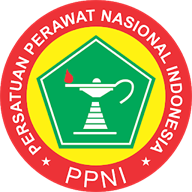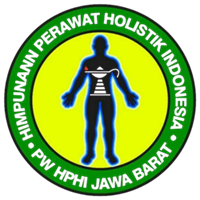The Relationship between the use of ATS and the level of satisfaction of the family of patients in the emergency room at the Banjar City Hospital
DOI:
https://doi.org/10.52221/jvnus.v1i1.141Keywords:
Australasian Triage Scale (ATS) Method, SatisfactionAbstract
The Australasian Triage Scale (ATS) method is one of several triage systems used in Indonesia for the assessment of clinical emergencies. Emergency Department (IGD) as the leading service provider also takes part in the realization of hospital customer satisfaction. Siboro (2014) says that customer satisfaction is determined by the whole series of services, including patient registration/admission, doctors, nurses, food, medicines, facilities and equipment, hospital physical facilities and administrative services (Siboro, 2014). Based on information compiled by Warta Priangan on March 15, 2019, a Banjar resident complained about the service at the Emergency Room at Banjar City Hospital. One of the patient's families admitted that they were disappointed with the government hospital services due to the lack of response from nurses and doctors in dealing with their sick child. These complaints indicate that patients are not satisfied with nursing services and can affect the quality of hospital services. The purpose of this study was to determine the relationship between the use of ATS triage and the level of patient satisfaction in the ER at the Banjar City Hospital. The type of research used is a descriptive correlation design with a cross-sectional design which aims to determine the relationship between the variables studied. The total population is 19,661 people. The sampling technique of Non-Probability Sampling is accidental sampling with a sample size of 99 people. The instrument in this study used a questionnaire. The results of hypothesis testing using the chi-square obtained p-value of 0.000, smaller than 0.05, which means Ho is rejected and Ha is accepted so the decision is that there is a relationship between the use of ATS and the level of satisfaction of the patient's family in the Emergency Room of the Banjar City Hospital
Downloads
References
Alfianika, N. (2016). Buku Ajar Metode Penelitian, Yogyakarta: CV. Budi Utama.
Aloyce, R., Leshabari, S., & Brysiewicz, P. (2014). Assessment of knowledge and skills of triage amongst nurses working in the emergency centres in Dar es Salaam, Tanzania. African Journal of Emergency Medicine
Chapman, R., & Martin, C. (2014). Perceptions of Australian emergency staff towards patients presenting with deliberate self-poisoning: a qualitative perspective. International emergency nursing, 22(3).
Christ, M., Grossmann, F., Winter, D., Bingisser, R., & Platz, E. (2010). Modern triage in the emergency department. Deutsches Ärzteblatt International, 107(50), 892
Emergency, P. (2011). Basic Trauma Life Support. Cibinong: Pro Emergency Resuscitation Council (UK).(2010, Oktober).(Sitase) Http://Www. Resus. Org. Uk Pada Tanggal, 19.
Ernawati, N. L. A. K., Nursalam, N., & Djuari, L. (2011). Kebutuhan riil tenaga perawat dengan metode Workload Indicator Staff Need (WISN). Jurnal Ners
Firdaus, M. N. (2017). Penerapan Ats Terhadap Waiting Time Klien Di Igd Rsud Ngudi Waluyo Wlingi Blitar. Publikasi Hasil Penelitian.
Habib, H., Sulistio, S., Mulyana, R. M., Albar, I. A., & RSCM, I. G. D. (2016). Triase Modern Rumah Sakit dan Aplikasinya di Indonesia. Reseacrh Gate.
Hermiati, H., Hutapea, F., & Wiyono, T. (2017). Analisa Waktu Tunggu Pelayanan Radiologi RS Santa Elisabet Batam. Jurnal Manajemen Dan Administrasi Rumah Sakit Indonesia (MARSI).
Hodge, A., Hugman, A., Varndell, W., & Howes, K. (2013). A review of the quality assurance processes for the Australasian Triage Scale (ATS) and implications for future practice. Australasian Emergency Nursing Journal.
Kartikawati, D. (2011). Buku ajar dasar-dasar keperawatan gawat darurat. Jakarta: Salemba Medika.
Lumbantoruan, N. P., & Nazmudin, T. R. E. (2015). BTCLS dan Disaster Management. Tangerang Selatan: Medhatama Restyan.
Mahyawati, M., & Widaryati, W. (2015). Hubungan Kegawadaruratan Pasien dengan Waktu Tanggap Perawat di IGD RS PKU Muhammadiyah Yogyakarta. STIKES’Aisyiyah Yogyakarta.
Martin, I., Kim, J. W., Dawson, V. L., & Dawson, T. M. (2014). LRRK2 pathobiology in Parkinson's disease. Journal of neurochemistry.
Meivia, M., Semil, N., & Budiarto, G. (2018). Kualitas Pelayanan Pasien Instalansi Gawat Darurat (Igd) Di Rumah Sakit Umum Daerah (Rsud) Lahat. Sriwijaya University.Muninjaya, G. A. (2011). Manajemen mutu pelayanan kesehatan. Jakarta: EGC
Notoatmodjo, S. (2012). Metodologi penelitian kesehatan (Cetakan VI). Jakarta: Penerbit PT. Rineka Cipta.
Nugroho, A. (2012). Reyakasa Perangkat Lunak Berbasis Objek Dengan Metodologi USDP. Yogyakarta: Andi.
Nursalam, N. (2016). Metodologi Penelitian Ilmu Keperawatan. Salimba Medika.
Permana, A. (2016). Fungsi Sosial Rumah Sakit Berdasarkan Ketentuan Pasal 29 Ayat 1 Huruf F Undang Undang No 44 Tahun 2009 Tentang Rumah Sakit Dikaitkan Dengan Undang Undang No 36 Tahun 2009 Tentang Kesehatan. Fakultas Hukum (UNISBA).
Setiawan, H., Suhanda, S., Rosliati, E., Firmansyah, A., & Fitriani, A. (2018). Promosi Kesehatan Pencegahan Hipertensi Sejak Dini. ABDIMAS: Jurnal Pengabdian Masyarakat, 1 (2), 41–45.
Siboro, T. (2014). Hubungan pelayanan perawatan dengan tingkat kepuasan pasien di Ruang Unit Gawat Darurat Rumah Sakit Advent Bandung Skripsi. Universitas Advent. Indonesia. Bandung.
Sugiyono, P. D. (2013). Statistik untuk Penelitian. CV. Alvabeta Bandung.
Supriyanto, S. d, & Ernawati, M. (2010). Pemasaran Industri Jasa Kesehatan. Edited by O. HS. Yogyakarta: Andi.
Downloads
Published
How to Cite
Issue
Section
License
Copyright (c) 2019 Jurnal Vocational Nursing Sciences (VNUS)

This work is licensed under a Creative Commons Attribution 4.0 International License.















